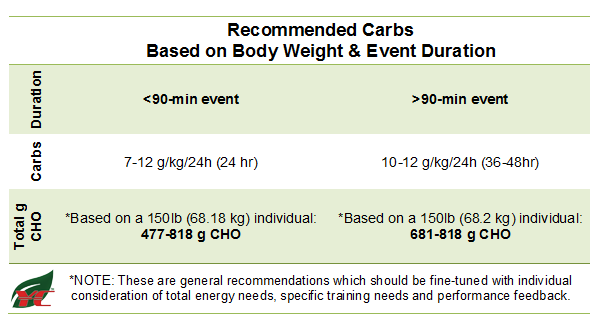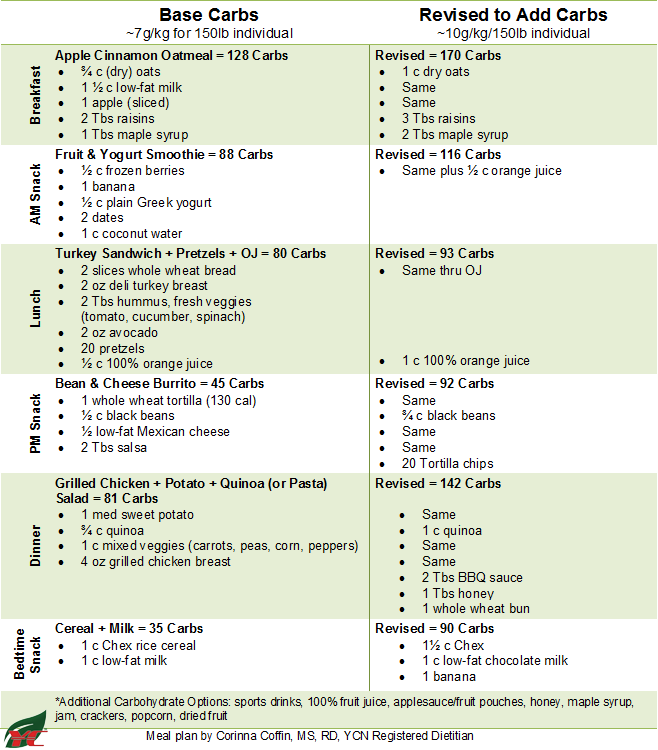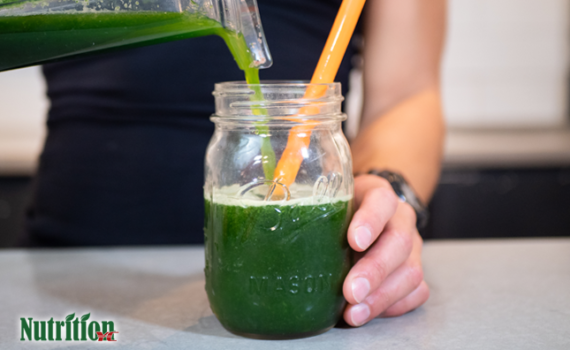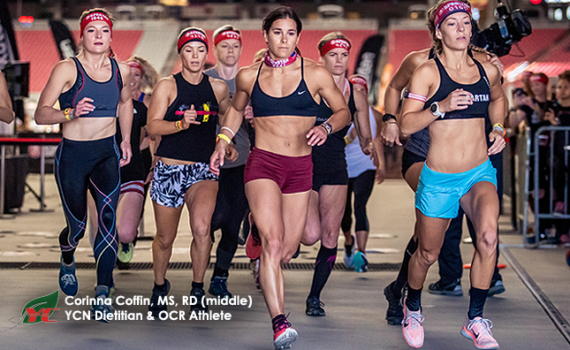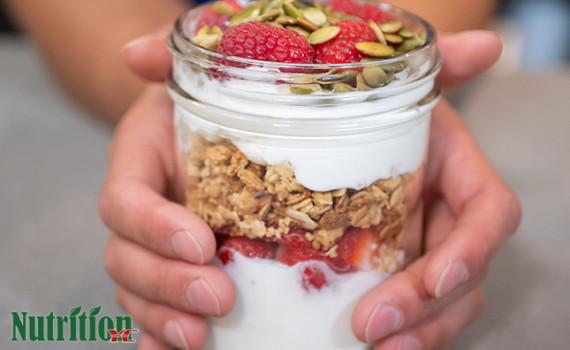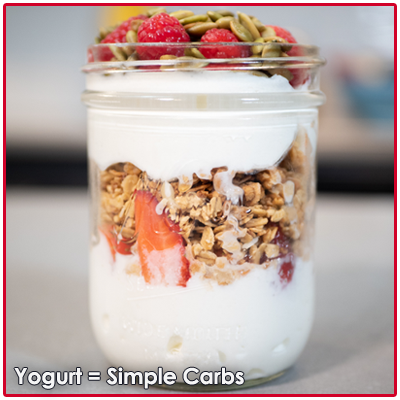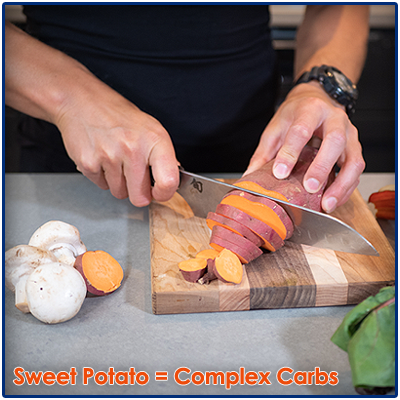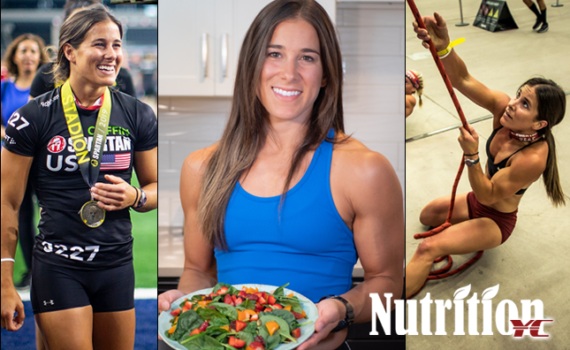
Race Day Fueling
Category:fuel,nutrition,performance,race dayAh race day. The day you’ve been waiting for. The day that puts all your hard work and training to the test. You’ve done everything to prepare physically and now it’s time to see it pay off. Except… You still have one very important job left to do: prepare your race day nutrition strategy. Far too often, we (as dietitians) have seen athletes work their tails off in training, only to sabotage their race day performance by lack of nutrition preparation and execution, particularly when it comes to events of longer duration (>1hr). You see, good performance is dependent upon gas in the tank and that tank has a limited capacity, which means more fuel needs to be added along the way in order to sustain performance and prevent a breakdown. Moreover, the quality and quantity of fuel is important to maximize speed and efficiency of travel, not to mention the role of timing. As you can see, there are a lot of factors that come into play on race day, and we want to make sure you have a good grip on the wheel if you catch our drift (no pun intended). In this article, we are going to break down the what, when, and how much of pre-, during and post-race nutrition so you can be in the drivers seat when it’s your time to shine.
Pre-race:
If you missed our previous blog post regarding carbohydrate loading and race week nutrition, we highly recommend that you go back and visit that article prior to race day to ensure you’re taking the necessary steps to prepare yourself nutritionally in advance, as the days leading up to a race are of particular importance. However, now that we’re here and focused on race day, let’s start with breakfast and pre-race fueling protocol. First off, no questions asked, you must eat breakfast on race morning. When you sleep, our body’s liver glycogen (storage form of carbohydrates) stores provide our brain and other organs with energy to carry out various bodily processes. Carbohydrate consumed in the 4-hr period pre exercise may increase body glycogen stores if these are suboptimal due to overnight fast, particularly in the liver (Thomas et al., 2016). Under most circumstances, pre-race breakfast is really the last opportunity to top off these stores prior to go-time. What you eat at breakfast will also be the fuel your body utilizes first during the early stages of your race, so it’s kind of a big deal.
Now that we’re in agreement regarding the importance of pre-race breakfast, let’s get into the nitty gritty of what, when and how much. As we also discussed in great length in our “Race Week- Carbohydrate Loading” article, carbohydrates are going to be the primary focus for this meal. The reason being: carbohydrates are the body’s preferred and most efficient fuel source, especially at high intensities (which is often the stimulus for most races). The timing of your meal will determine the quantity of carbohydrate, as well as, to some extent, the type (complex vs simple carbs). Most pre-race breakfast options include a variety of simple and complex carbohydrates, as “complex” sources provide more sustained energy but take longer to digest and process, while “simple” sources provide immediate energy. The 2018 International Olympic Committee consensus statement recommends 1-4 g/kg of carbohydrate 1-4 hours prior to an event. This means that if you consume breakfast 4 hours prior to the race start, your aim should be to consume 4 g/kg of carbohydrate. If you have 2 hours until race time, your goal is 2 g/kg carbohydrate. As always, these recommendations should be tailored with individual considerations, and timing of food intake around activity should be practiced well in advance to race day.
 As a note, pre-race fueling recommendations focus primarily on carbohydrates, as this is the body’s primary/preferred fuel source. Foods high in fat, protein and fiber may need to be avoided to reduce risk of GI issues during the event.
As a note, pre-race fueling recommendations focus primarily on carbohydrates, as this is the body’s primary/preferred fuel source. Foods high in fat, protein and fiber may need to be avoided to reduce risk of GI issues during the event.
During the Race:
The starting gun has sounded and you’re off like a rocket! Finally, you can set out to accomplish what you came here to do- race! The only thing that lies between you and the finish line are a bunch of obstacles and gnarly terrain. Time to focus on the physical! Except… you still can’t forget about fueling, particularly for longer races (>1-hr). An individual’s fueling strategy during competition can largely determine his/her performance outcome, which is always unfortunate to witness because it’s something completely controllable.
There is significant evidence of performance enhancement using strategies to maintain high carbohydrate availability during prolonged sustained or intermittent high-intensity exercise, whereas the depletion of endogenous glycogen stores is associated with fatigue in the form of reduced work rate, impaired skill concentration and increased perception of effort (Thomas et al., 2016). In a nutshell, fueling with carbohydrates is essential for those looking to perform.
We will cover the many different kinds of carbohydrate options out there and what scenarios are best to use which in our next blog post, but for now, let’s talk about amount and timing. We’ve broken down the essentials in a chart below to make things simple. Most obstacle course races that fall in the 1-3 hour range will require 30-60 grams of carbohydrate per hour.
A common mistake racers often make is fueling too late. These recommendations start the very first hour, so even though food might be the last thing on your mind 30 minutes into a race, you need to stay ahead on your calorie intake to prevent from bonking, particularly the longer the race. Most sports gels/gu’s and other carbohydrate supplements targeted for mid-race fueling contain ~20-30 grams of carbohydrates per serving, which makes things easy for the racer. To space out carbohydrate doses and minimize GI upset, a good rule of thumb is to consume 20-30 grams of carbohydrate every ~30min. The average person can oxidize glucose (carbohydrate) at a rate of 1 gram/minute, so over the course of an hour, that comes out to 60 grams of oxidized glucose. This oxidation rate is limited by intestinal glucose absorption, so an intake of carbohydrate above 60 g/hr will likely cause GI upset and decrease performance.
Post-race:
You made it! The race is over, you’re exhausted and dirty, but the sense of accomplishment brings a smile to your face that you can’t wipe off no matter how hard you scrub. You have zero plans for the rest of the day but to hang with friends, cheer on other racers out on course, kick your feet up, eat lots of food, and eventually shower.
While it’s likely you’ll be quite hungry after the race and already be thinking about food, this isn’t our first rodeo (we know how things work). You have every intention of getting something in your belly, but then you visit with friends in the venue area, share race stories, cheer on fellow racers at the rig, check out the vendor village, and before you know it, an hour (or two) has flown by. All of those activities are what makes the OCR experience so much fun, and we fully support doing all of them, but we are here to be your nutrition guides, and so we must emphasize the importance of a post-race snack/meal as soon as possible upon finishing.
There are a few reasons why this post-race snack and/or meal is essential. First off, for replenishment. We expend a lot of energy/calories during exercise, especially in a race/competition setting when exertion is high. The primary focus of this article has been on carbohydrates, so it makes sense that when it comes to replenishment, we should also think carbohydrates! By restoring our muscle glycogen levels, we are not only providing our muscles with the support to engage in other (future) physical activity, we’re also helping them recover. This brings us to reason number two: recovery! During physical activity (particularly intense and/or sustained activity), our muscles face resistance, in some capacity, which leads to microscopic tears within the muscle tissue. While this is a normal phenomena of exercise and part of muscular adaptation, proper nutrition protocol following exercise has the ability to aid in the recovery process by repairing damaged tissue, which leads us to our third reason: repair! This is where dietary protein comes into play. Research shows that, in response to exercise, the maintenance, repair and synthesis of skeletal muscle proteins is optimized with the consumption of high quality protein, and should therefore be included in post-exercise nutrition protocol (Thomas et al., 2016).
To maximize recovery and support the repair/remodeling process, we recommend consuming 15-25 g of protein with ~1 g/kg body weight of carbohydrate (banana, energy bar, bagel, muffin etc.) as soon as possible within finishing your race, followed by a well-balanced meal within 1.5-2 hours (Thomas et al., 2016) (Burke, et al., 2017). See chart below for specific recommendations.
Conclusion:
We hope you now feel more confident about your race day fueling strategy and have a better understanding of the “why” behind these nutrition protocols. In the following weeks, we will continue with our “Race Day Fueling” theme and provide more details on this topic. In the meantime, we recommend putting these strategies into practice during training so come race day, you can feel confident in your game plan and its execution. As always, our Yancy Camp Nutrition team is here to help, so don’t hesitate to contact us.




